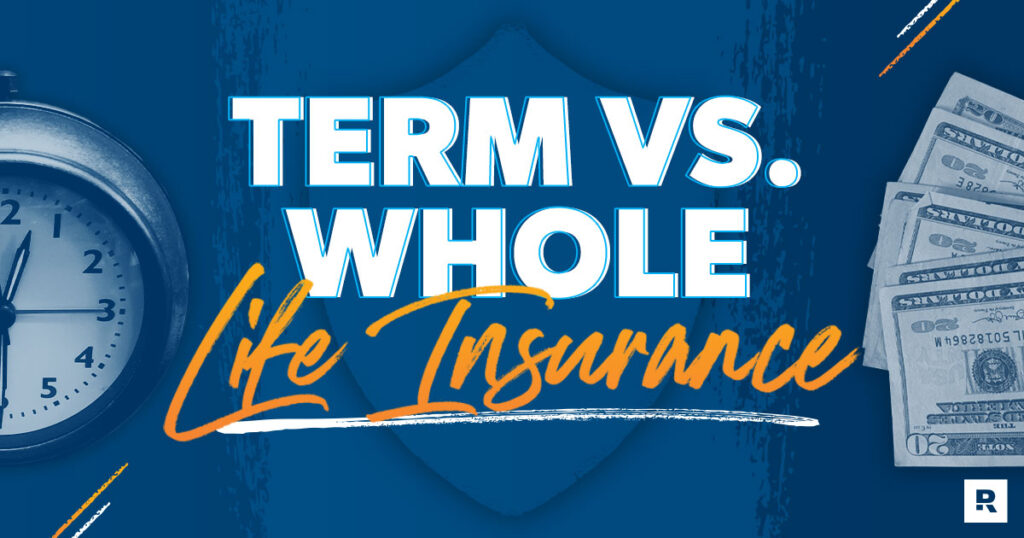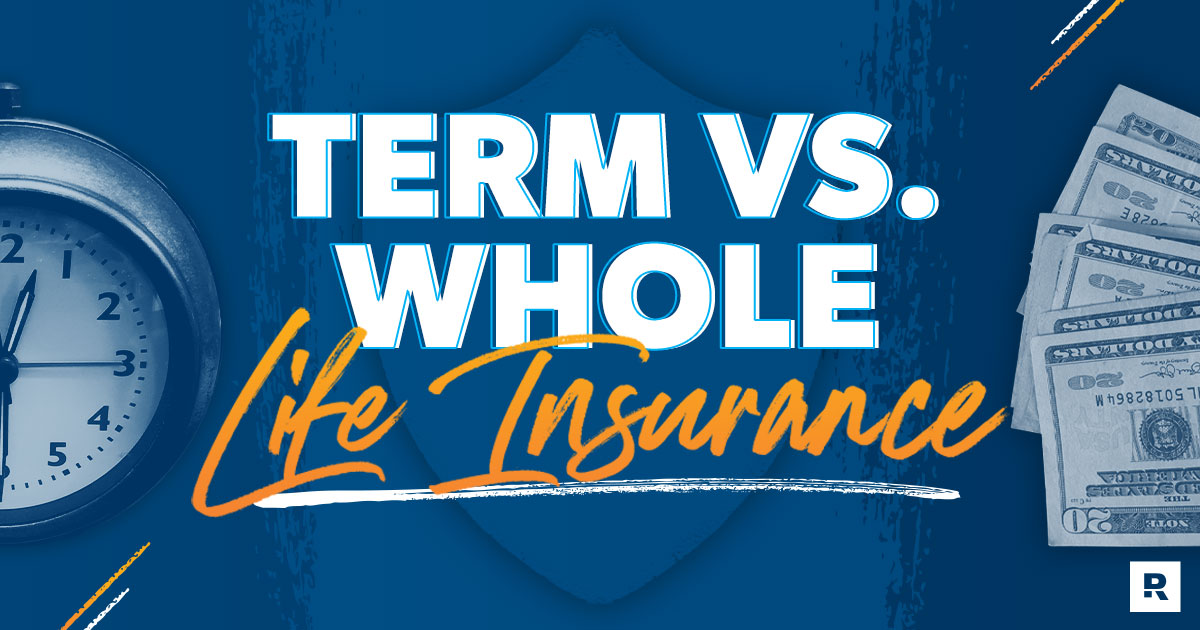Life insurance is a crucial component of financial planning, providing financial security to loved ones in the event of the policyholder’s death. Two primary types of life insurance dominate the market: term life insurance and whole life insurance. Each type offers distinct features and benefits tailored to different financial needs and goals. Understanding the differences between term and whole life insurance can help you make an informed decision about which policy aligns best with your financial objectives.

Life insurance serves as a safety net, offering financial protection to beneficiaries in the event of the insured individual’s death. Term and whole life insurance represent two fundamentally different approaches to life insurance, each with its own set of advantages and considerations. `This` comprehensive guide aims to compare term and whole life insurance, helping you determine which policy suits your specific needs and financial goals.
Understanding Term Life Insurance
What is Term Life Insurance?
Term life insurance provides coverage for a specific period, typically ranging from 10 to 30 years, during which premiums remain fixed. If the insured individual passes away during the term, the policy pays out a death benefit to the beneficiaries. Unlike whole life insurance, term policies do not accumulate cash value and are designed primarily for temporary needs.
Benefits of Term Life Insurance
- Cost-Effectiveness: Term life insurance premiums are generally lower compared to whole life insurance, making it more affordable, especially for young families or individuals on a budget.
- Flexibility: Term policies offer flexibility in coverage duration. Policyholders can choose terms that align with their financial obligations, such as paying off a mortgage or supporting children until they become financially independent.
- Simple and Transparent: The structure of term life insurance is straightforward, with premiums and coverage clearly defined at the outset.
Drawbacks of Term Life Insurance
- Limited Duration: Coverage ends after the specified term, leaving policyholders without insurance if they outlive the policy.
- No Cash Value: Unlike whole life insurance, term policies do not accumulate cash value that can be accessed during the insured’s lifetime.

Exploring Whole Life Insurance
What is Whole Life Insurance?
Whole life insurance provides coverage for the insured’s entire life, as long as premiums are paid. It combines a death benefit with a cash value component that grows over time, offering a more permanent form of financial protection.
Benefits of Whole Life Insurance
- Lifetime Coverage: Whole life insurance guarantees coverage until the insured’s death, providing peace of mind and ensuring financial protection for beneficiaries.
- Cash Value Accumulation: A portion of premiums paid into whole life insurance policies accumulates as cash value, which policyholders can borrow against or withdraw during their lifetime.
- Level Premiums: Premiums typically remain constant throughout the policyholder’s life, offering predictability and stability in financial planning.
Drawbacks of Whole Life Insurance
- Higher Initial Costs: Whole life insurance premiums are initially higher compared to term insurance due to the cash value component and guaranteed lifetime coverage.
- Limited Flexibility: Unlike term insurance, whole-life policies offer limited flexibility in adjusting coverage or premiums once the policy is in force.
Key Differences Between Term and Whole Life Insurance
Premiums
- Term life insurance premiums are lower initially but may increase with age or upon policy renewal. Whole life insurance premiums are higher but remain stable throughout the policyholder’s life.
Coverage Duration
- Term insurance offers coverage for a specific period, while whole life insurance provides lifelong coverage, as long as premiums are paid.
Cash Value Accumulation
- Whole life insurance policies accumulate cash value over time, which can be used for various purposes, including supplementing retirement income or funding major expenses.
Flexibility in Coverage and Payments
- Term insurance allows policyholders to adjust coverage amounts and durations to meet changing financial needs. Whole life insurance offers limited flexibility once the policy is established.
Suitability for Different Life Stages and Financial Goals
Young Families
- Term life insurance is often preferred for young families due to its affordability and flexibility in coverage durations. It can provide financial protection during the years when dependents are young and expenses are high.
Established Families
- Whole life insurance may be suitable for established families looking to build long-term financial security and create an estate for future generations. It offers permanent coverage and cash value accumulation benefits.
Retirement Planning
- Whole life insurance can play a role in retirement planning by providing a source of tax-deferred savings and supplemental income. Term insurance, while less relevant in retirement, can still be used strategically for specific financial needs.
Case Studies and Examples
Case Study 1: Young Professional
Sarah, a 30-year-old professional, opts for a 20-year term life insurance policy to cover her mortgage and provide financial security for her young children until they become financially independent.
Case Study 2: Established Family
John and Emily, a married couple in their 40s, choose whole life insurance to ensure lifelong financial protection and build a legacy for their children and grandchildren through the policy’s cash value accumulation.
Making the Right Choice: Factors to Consider
Personal Financial Situation
- Consider income, assets, liabilities, and financial goals when choosing between term and whole life insurance.
Long-Term Goals
- Determine whether you prioritize cost-effective coverage for temporary needs or seek permanent financial protection and wealth accumulation.
Risk Tolerance
- Assess your comfort level with investment risk and commitment to long-term financial planning when selecting a life insurance policy.
Conclusion
Choosing between term and whole life insurance involves evaluating your current financial situation, future goals, and risk tolerance. Both types of insurance offer unique benefits and considerations that should align with your individual needs and preferences. Consult with a financial advisor to explore your options and make an informed decision that ensures financial security for you and your loved ones.
Additional Sections (Optional)
- Insurance Comparison Tools and Resources: Provide links to online tools or resources for comparing term and whole life insurance policies.
- FAQs: Address common questions about life insurance, term vs. whole life insurance, and policy considerations.
- Glossary of Terms: Define key insurance terminology to aid readers in understanding policy details and implications.



Thanks <3
🍀🍀🍀
Thanks 🤗🤗🤗
Thanks par ✨✨✨